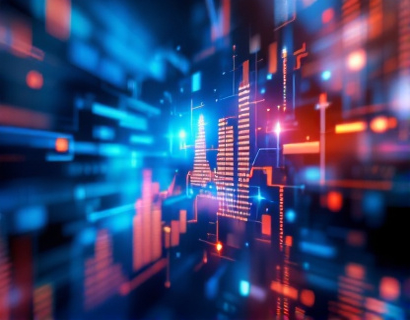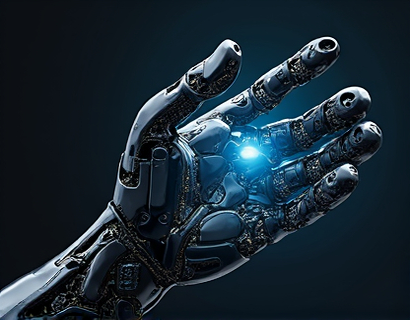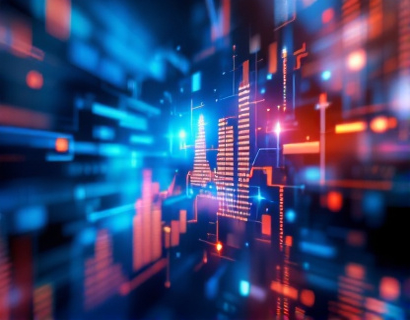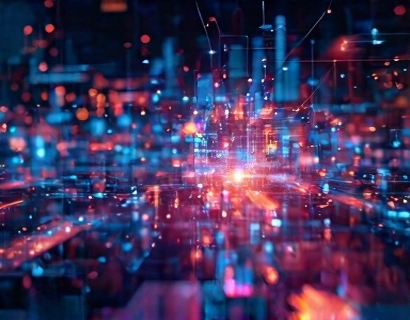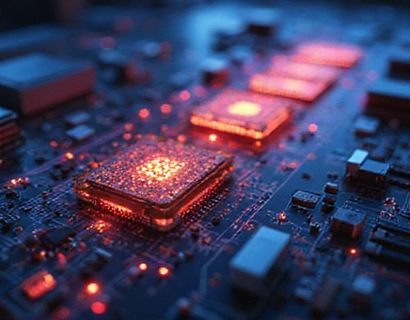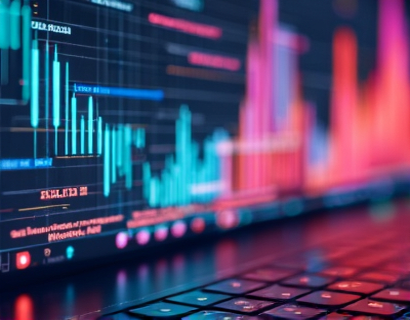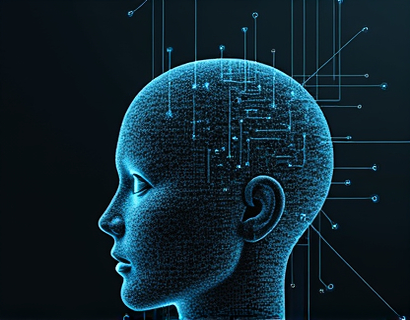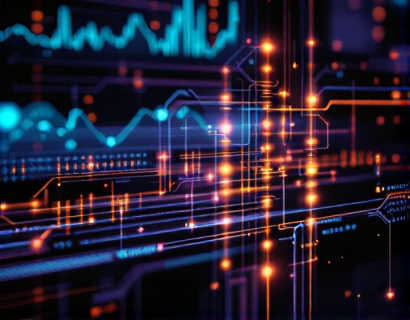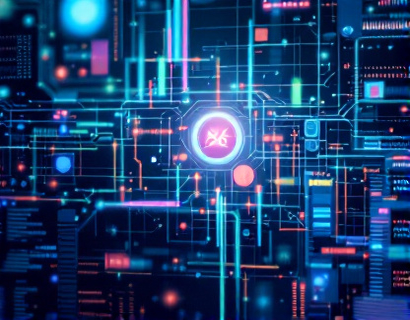Unlocking Universal Decentralized Potential: Mastering the Software Stack for Seamless Governance and Operations
The advent of decentralized systems has opened new horizons for organizational structures, promising enhanced governance, transparency, and efficiency. This guide delves into the intricate world of software stacks that empower the creation of universal decentralized organizations, focusing on how these technologies can revolutionize governance and operations. For enthusiasts of decentralized systems, understanding the software ecosystem is crucial to harnessing its full potential.
Understanding Decentralized Organizations
Decentralized organizations, often built on blockchain technology, operate without a central authority, relying instead on a network of nodes to maintain and validate transactions or data. This decentralized nature ensures that no single entity has control, promoting a more democratic and resilient system. The software stack plays a pivotal role in realizing this vision, providing the tools and frameworks necessary for seamless governance and operations.
The Role of Software in Decentralized Governance
Effective governance in decentralized organizations hinges on robust software solutions that facilitate decision-making, transparency, and accountability. Smart contracts, self-executing contracts with the terms directly written into code, are a cornerstone of this governance model. They automate and enforce agreements, reducing the need for intermediaries and minimizing the risk of fraud or manipulation.
Decentralized Autonomous Organizations (DAOs) are a prime example of how software can enable new forms of governance. DAOs use blockchain-based voting systems to allow members to propose and vote on proposals, ensuring that decisions reflect the collective will of the community. This democratic approach to governance is made possible through sophisticated software that manages the entire process, from proposal submission to voting and execution.
Key Components of a Decentralized Software Stack
A comprehensive software stack for decentralized organizations comprises several critical components, each serving a unique purpose. These components work together to create a cohesive and efficient system.
Blockchain Platforms
Blockchain platforms form the foundation of decentralized systems, providing a secure and transparent ledger for transactions and data storage. Popular platforms like Ethereum, Binance Smart Chain, and Solana offer different features and capabilities, catering to various use cases. Ethereum, with its extensive smart contract functionality, is often the go-to choice for building DAOs and other decentralized applications.
Smart Contracts
Smart contracts are self-executing contracts with the terms of the agreement directly written into code. They automate and enforce the execution of agreements without the need for intermediaries. Platforms like Ethereum and Solana support smart contracts, enabling the creation of complex governance mechanisms and automated processes within decentralized organizations.
Decentralized Storage Solutions
Decentralized storage solutions, such as IPFS (InterPlanetary File System) and Filecoin, address the need for secure and censorship-resistant data storage. These systems distribute data across the network, ensuring that files are accessible even if some nodes fail. This resilience is crucial for maintaining the integrity and availability of data in decentralized organizations.
Identity and Access Management
Effective identity and access management (IAM) is essential for securing decentralized systems. Solutions like Self-Sovereign Identity (SSI) empower users to control their digital identities, ensuring privacy and security. SSI uses blockchain-based identifiers and cryptographic techniques to verify identities without relying on centralized authorities.
Communication Protocols
Decentralized organizations require robust communication protocols to facilitate seamless interaction between nodes and applications. Protocols like InterPlanetary Communication (IPC) and Web3 enable decentralized applications to communicate and share data efficiently, ensuring that the system operates smoothly and cohesively.
Building a Seamless Governance System
Creating a seamless governance system in a decentralized organization involves integrating these software components into a cohesive framework. This framework must be designed to handle complex workflows, ensure transparency, and maintain high levels of security and efficiency.
One approach is to develop a modular architecture that allows for the integration of different components as needed. This flexibility enables organizations to scale and adapt to changing requirements without compromising the integrity of the system. For instance, a modular governance platform can incorporate smart contracts for proposal and voting processes, decentralized storage for document management, and IAM for secure access control.
Enhancing Transparency and Accountability
Transparency is a cornerstone of decentralized governance. By leveraging blockchain technology, all transactions and decisions can be recorded on a public ledger, accessible to all members. This transparency builds trust and accountability, as actions and outcomes are visible and verifiable. Additionally, auditable smart contracts ensure that governance processes are followed as intended, reducing the risk of manipulation or errors.
Facilitating Collaboration and Participation
Collaboration and participation are vital for the success of decentralized organizations. Software tools that simplify collaboration, such as decentralized messaging platforms and project management tools built on blockchain, can enhance teamwork and engagement. These tools ensure that all members have equal access to information and can contribute to decision-making processes.
Moreover, decentralized voting systems can be designed to be user-friendly and accessible, encouraging higher participation rates. By removing barriers to entry and providing clear, transparent mechanisms for involvement, decentralized organizations can foster a more inclusive and active community.
Ensuring Efficiency and Scalability
Efficiency and scalability are critical for the long-term viability of decentralized organizations. The software stack must be optimized to handle increasing loads and maintain performance as the organization grows. This involves selecting scalable blockchain platforms, implementing efficient smart contract designs, and utilizing caching and sharding techniques to manage data and transactions effectively.
Another key aspect is the use of layer 2 solutions, which process transactions off the main blockchain to reduce congestion and lower costs. Examples include state channels and sidechains, which can significantly enhance the performance of decentralized applications without compromising security.
Case Studies and Real-World Applications
Several projects have successfully implemented these software solutions to create effective decentralized governance systems. For instance, a decentralized funding platform might use smart contracts to manage grant proposals, voting mechanisms to allocate funds, and decentralized storage to store project documents. This platform would benefit from a modular architecture that allows for easy updates and integrations as the project evolves.
Another example is a decentralized community management platform that uses IAM for secure access, decentralized communication tools for real-time collaboration, and a transparent voting system for community decisions. Such platforms demonstrate the practical applications and benefits of a well-designed software stack in decentralized organizations.
Challenges and Future Directions
While the potential of decentralized organizations is vast, several challenges must be addressed to fully realize this vision. Technical challenges include improving scalability, reducing transaction costs, and enhancing user experience. Additionally, regulatory and legal uncertainties can pose obstacles to the adoption of decentralized systems.
Looking ahead, ongoing research and development in areas such as zero-knowledge proofs, interoperability protocols, and advanced IAM solutions will continue to push the boundaries of what is possible. The collaboration between developers, researchers, and practitioners will be crucial in overcoming these challenges and unlocking the full potential of decentralized governance and operations.
In conclusion, mastering the software stack is essential for building seamless and efficient decentralized organizations. By leveraging blockchain, smart contracts, decentralized storage, and other technologies, enthusiasts can create governance systems that are transparent, collaborative, and resilient. As the field continues to evolve, the possibilities for innovation and transformation in decentralized systems are limitless.








